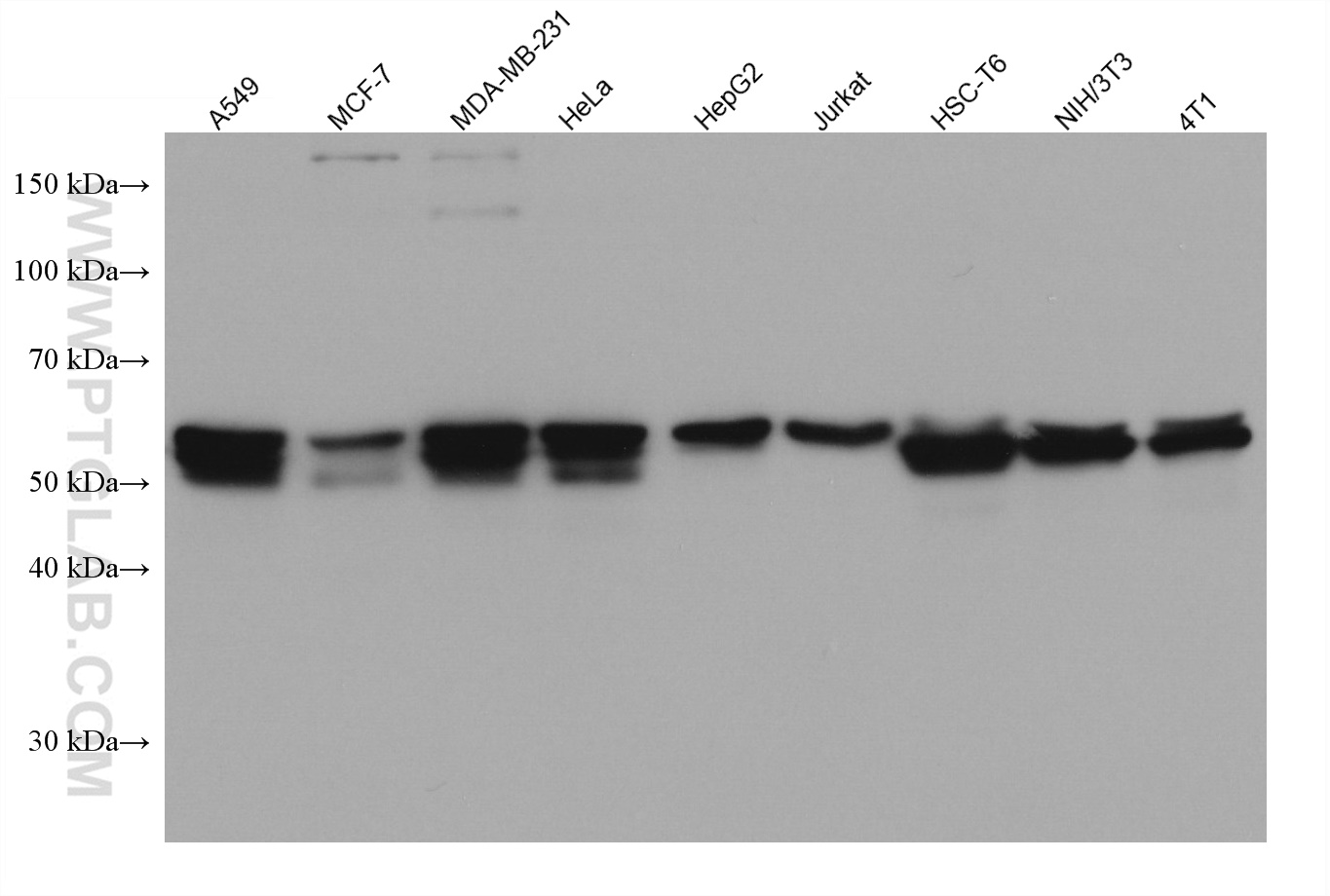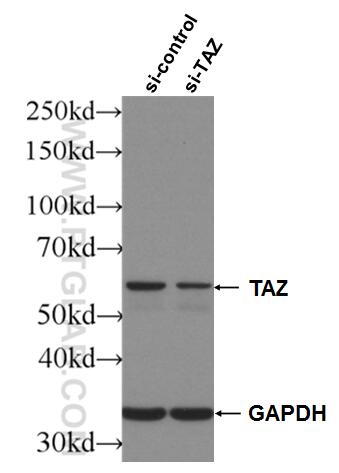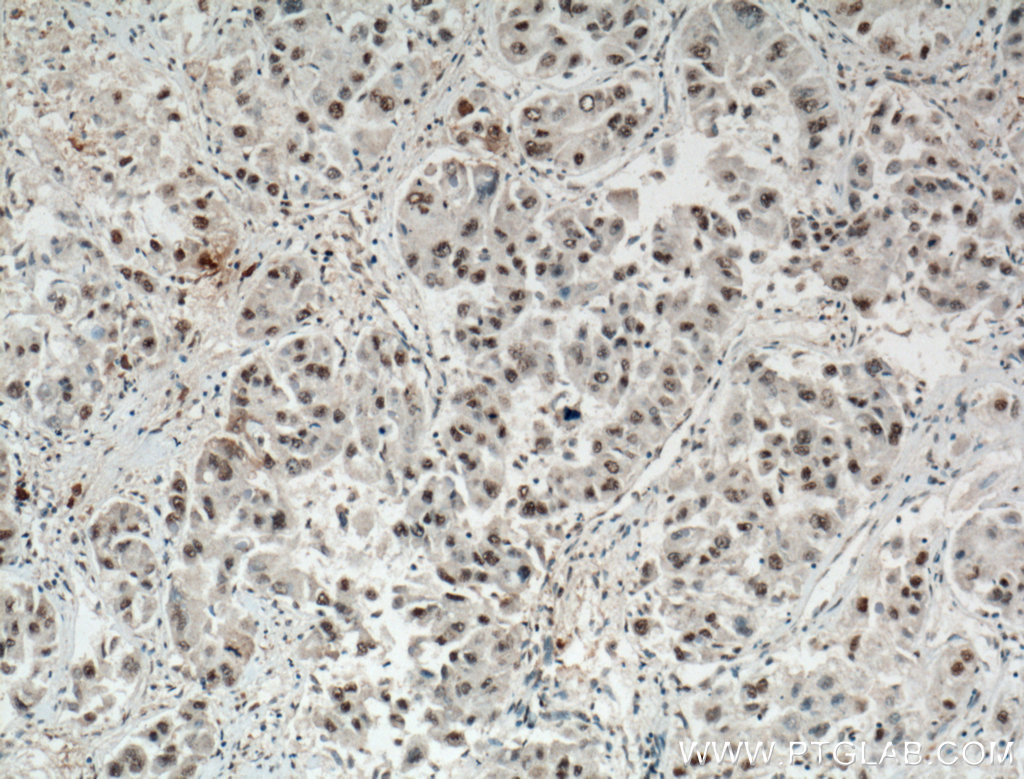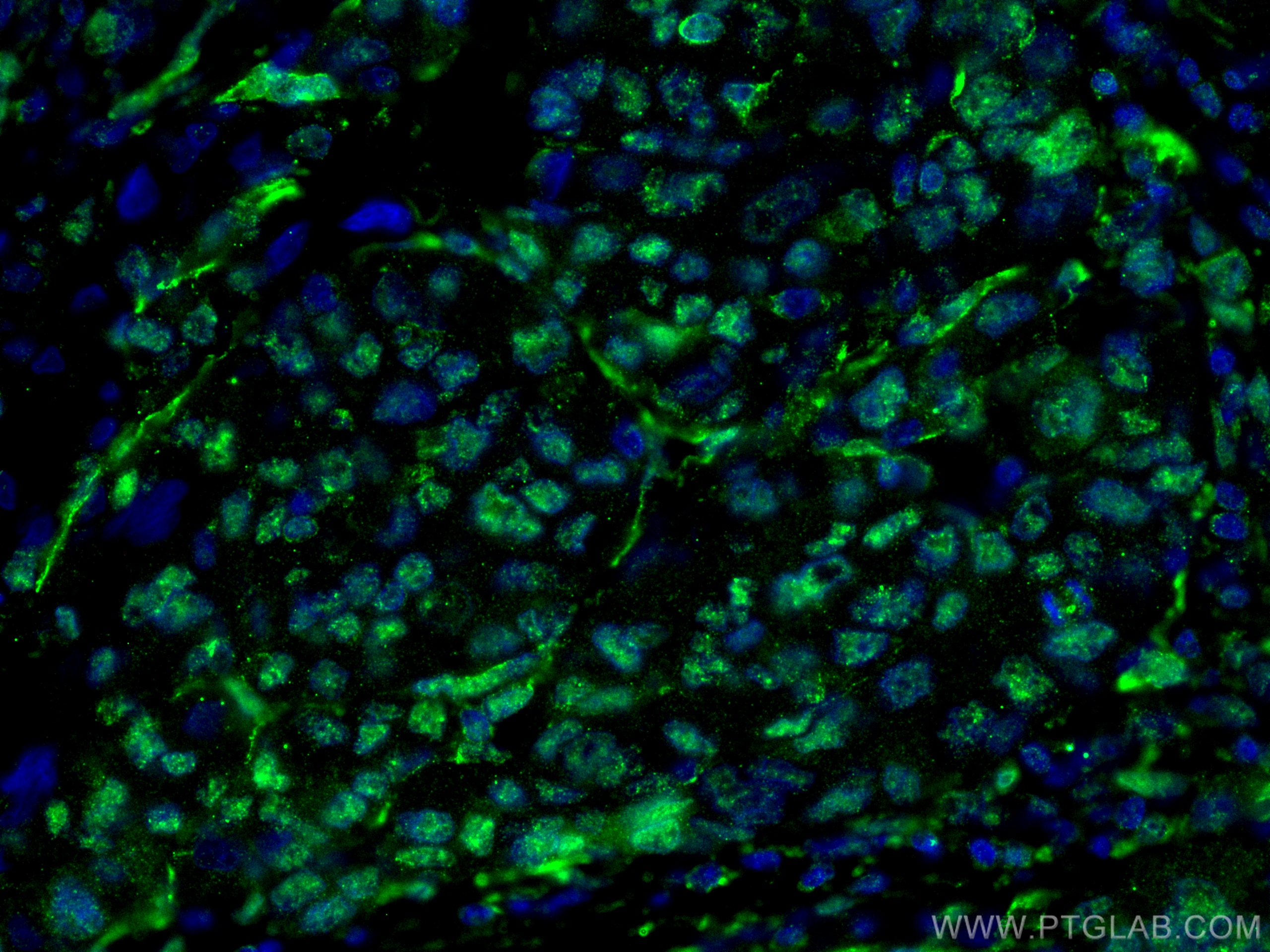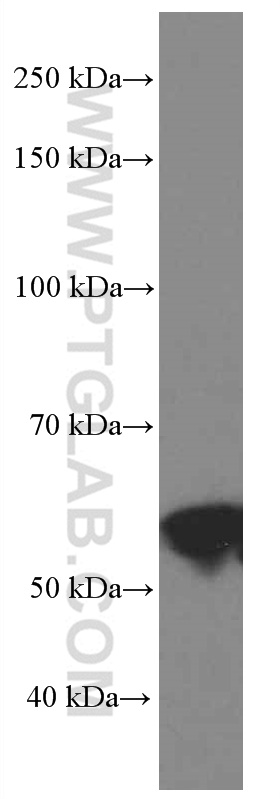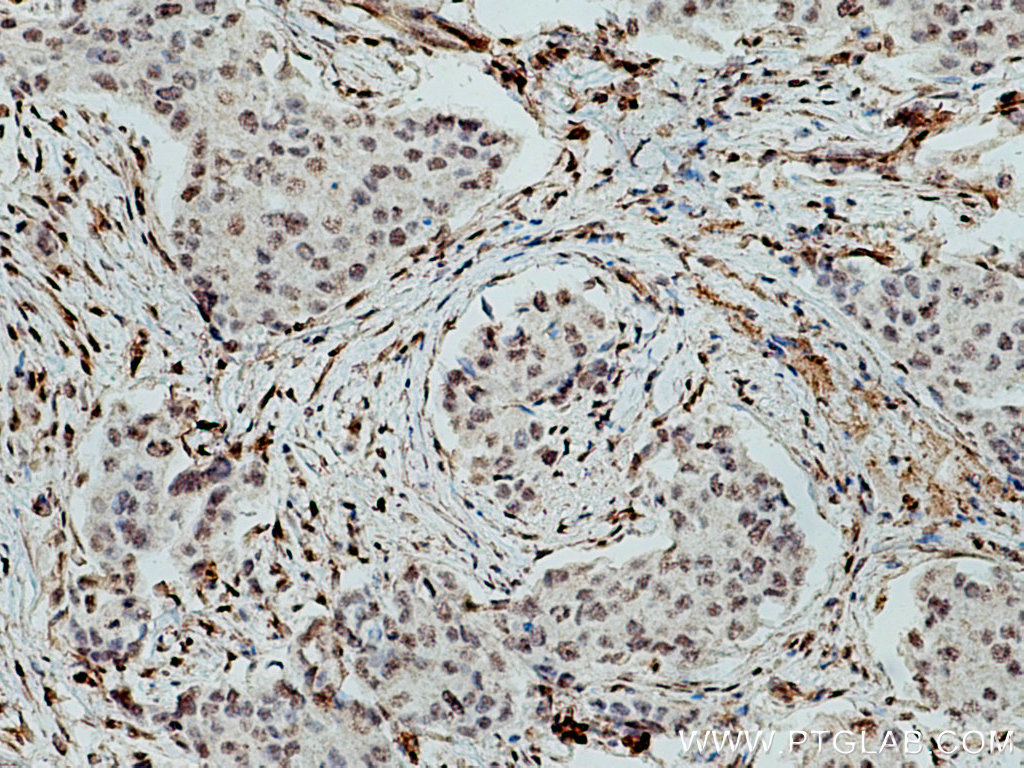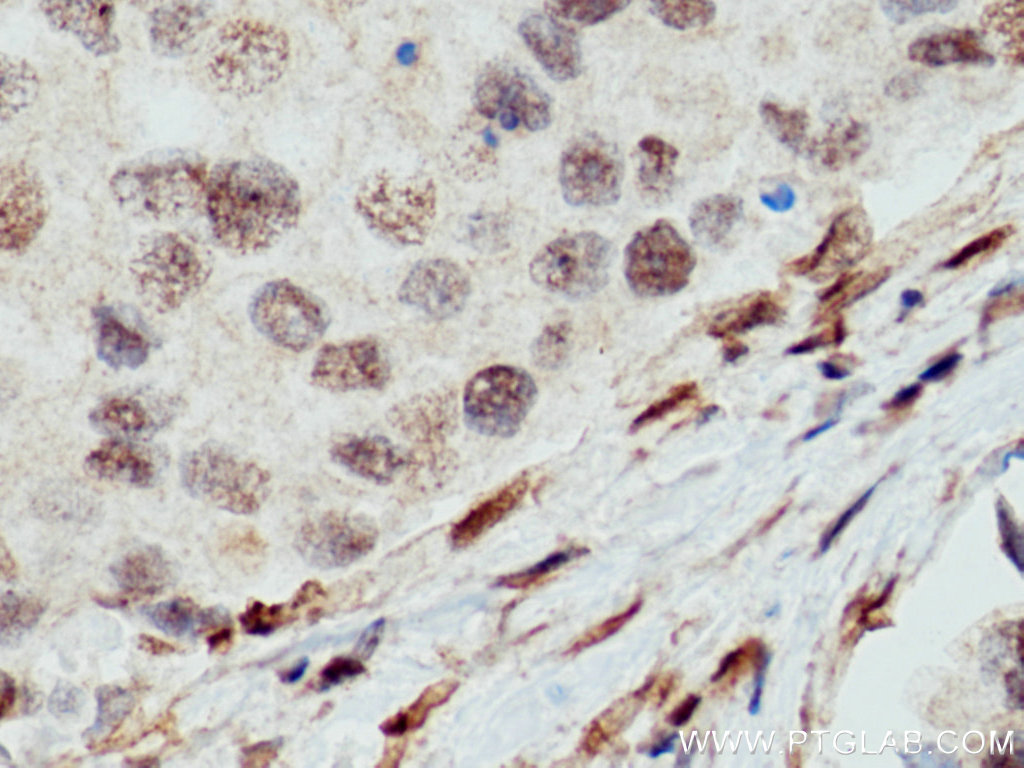验证数据展示
经过测试的应用
| Positive WB detected in | A549 cells, HepG2 cells, HSC-T6 cells, MCF-7 cells, NIH/3T3 cells, MDA-MB-231 cells, HeLa cells, Jurkat cells, 4T1 cells, MDA-MB-453S cells |
| Positive IHC detected in | human liver cancer tissue, human breast cancer tissue Note: suggested antigen retrieval with TE buffer pH 9.0; (*) Alternatively, antigen retrieval may be performed with citrate buffer pH 6.0 |
| Positive IF-P detected in | human liver cancer tissue |
推荐稀释比
| 应用 | 推荐稀释比 |
|---|---|
| Western Blot (WB) | WB : 1:5000-1:50000 |
| Immunohistochemistry (IHC) | IHC : 1:300-1:1200 |
| Immunofluorescence (IF)-P | IF-P : 1:200-1:800 |
| It is recommended that this reagent should be titrated in each testing system to obtain optimal results. | |
| Sample-dependent, Check data in validation data gallery. | |
产品信息
66500-1-Ig targets WWTR1/TAZ in WB, IHC, IF-P, ELISA applications and shows reactivity with human, mouse, rat samples.
| 经测试应用 | WB, IHC, IF-P, ELISA Application Description |
| 文献引用应用 | WB, IHC, IF |
| 经测试反应性 | human, mouse, rat |
| 文献引用反应性 | human, mouse, rat |
| 免疫原 |
CatNo: Ag13330 Product name: Recombinant human WWTR1,TAZ protein Source: e coli.-derived, PET28a Tag: 6*His Domain: 1-400 aa of BC014052 Sequence: MNPASAPPPLPPPGQQVIHVTQDLDTDLEALFNSVMNPKPSSWRKKILPESFFKEPDSGSHSRQSSTDSSGGHPGPRLAGGAQHVRSHSSPASLQLGTGAGAAGSPAQQHAHLRQQSYDVTDELPLPPGWEMTFTATGQRYFLNHIEKITTWQDPRKAMNQPLNHMNLHPAVSSTPVPQRSMAVSQPNLVMNHQHQQQMAPSTLSQQNHPTQNPPAGLMSMPNALTTQQQQQQKLRLQRIQMERERIRMRQEELMRQEAALCRQLPMEAETLAPVQAAVNPPTMTPDMRSITNNSSDPFLNGGPYHSREQSTDSGLGLGCYSVPTTPEDFLSNVDEMDTGENAGQTPMNINPQQTRFPDFLDCLPGTNVDLGTLESEDLIPLFNDVESALNKSEPFLTWL 种属同源性预测 |
| 宿主/亚型 | Mouse / IgG1 |
| 抗体类别 | Monoclonal |
| 产品类型 | Antibody |
| 全称 | WW domain containing transcription regulator 1 |
| 别名 | TAZ, WWTR1, 2A12A10, Transcriptional coactivator with PDZ-binding motif, WW domain-containing transcription regulator protein 1 |
| 计算分子量 | 44 kDa |
| 观测分子量 | 55 kDa |
| GenBank蛋白编号 | BC014052 |
| 基因名称 | WWTR1 |
| Gene ID (NCBI) | 25937 |
| RRID | AB_2881864 |
| 偶联类型 | Unconjugated |
| 形式 | Liquid |
| 纯化方式 | Protein G purification |
| UNIPROT ID | Q9GZV5 |
| 储存缓冲液 | PBS with 0.02% sodium azide and 50% glycerol, pH 7.3. |
| 储存条件 | Store at -20°C. Stable for one year after shipment. Aliquoting is unnecessary for -20oC storage. |
背景介绍
TAZ, also referred as WWTR1, is a transcriptional co-activator with a PDZ-binding motif that is regulated by its interaction with 14-3-3 protein. TAZ is expressed in many primary tumors, such as breast cancer, thyroid carcinoma, colorectal cancer, and glioma. TAZ has been reported to be one of the nuclear effectors of Hippo-related pathways that regulate organ size control, cancer stem cell (CSC) properties, and epithelial-mesenchymal transition (EMT). TAZ has been defined for its role in the nucleus, where it functions directly as a transcriptional regulator by interacting with several nuclear factors as Runx2/Cbfa1, NHERF-2, TEF-1, TBX5, PAX3, PAX8 and TTF-1.
实验方案
| Product Specific Protocols | |
|---|---|
| IF protocol for WWTR1/TAZ antibody 66500-1-Ig | Download protocol |
| IHC protocol for WWTR1/TAZ antibody 66500-1-Ig | Download protocol |
| WB protocol for WWTR1/TAZ antibody 66500-1-Ig | Download protocol |
| Standard Protocols | |
|---|---|
| Click here to view our Standard Protocols |
发表文章
| Species | Application | Title |
|---|---|---|
Cell Death Differ Targeting USP10 induces degradation of oncogenic ANLN in esophageal squamous cell carcinoma | ||
Nat Commun LPA signaling acts as a cell-extrinsic mechanism to initiate cilia disassembly and promote neurogenesis.
| ||
Cell Signal RhoA/ROCK-TAZ Axis regulates bone formation within calvarial trans-sutural distraction osteogenesis | ||
Front Pharmacol TAZ Induces Migration of Microglia and Promotes Neurological Recovery After Spinal Cord Injury. | ||
Am J Transl Res VASN promotes YAP/TAZ and EMT pathway in thyroid carcinogenesis in vitro. | ||
Toxicol Appl Pharmacol Cysteine and glycine rich protein 2 exacerbates vascular fibrosis in pulmonary hypertension through the nuclear translocation of yes-associated protein and transcriptional coactivator with PDZ-binding motif |

